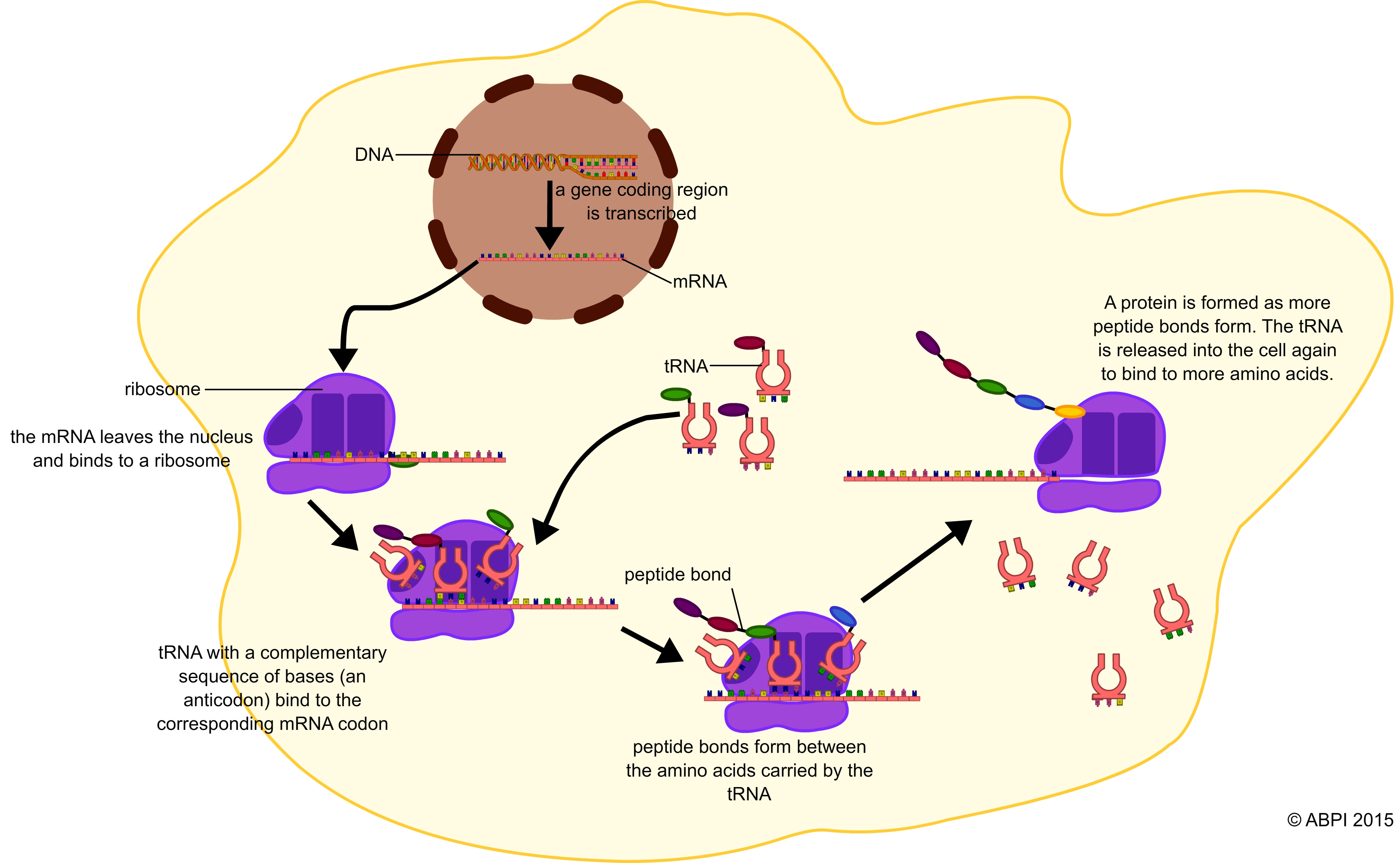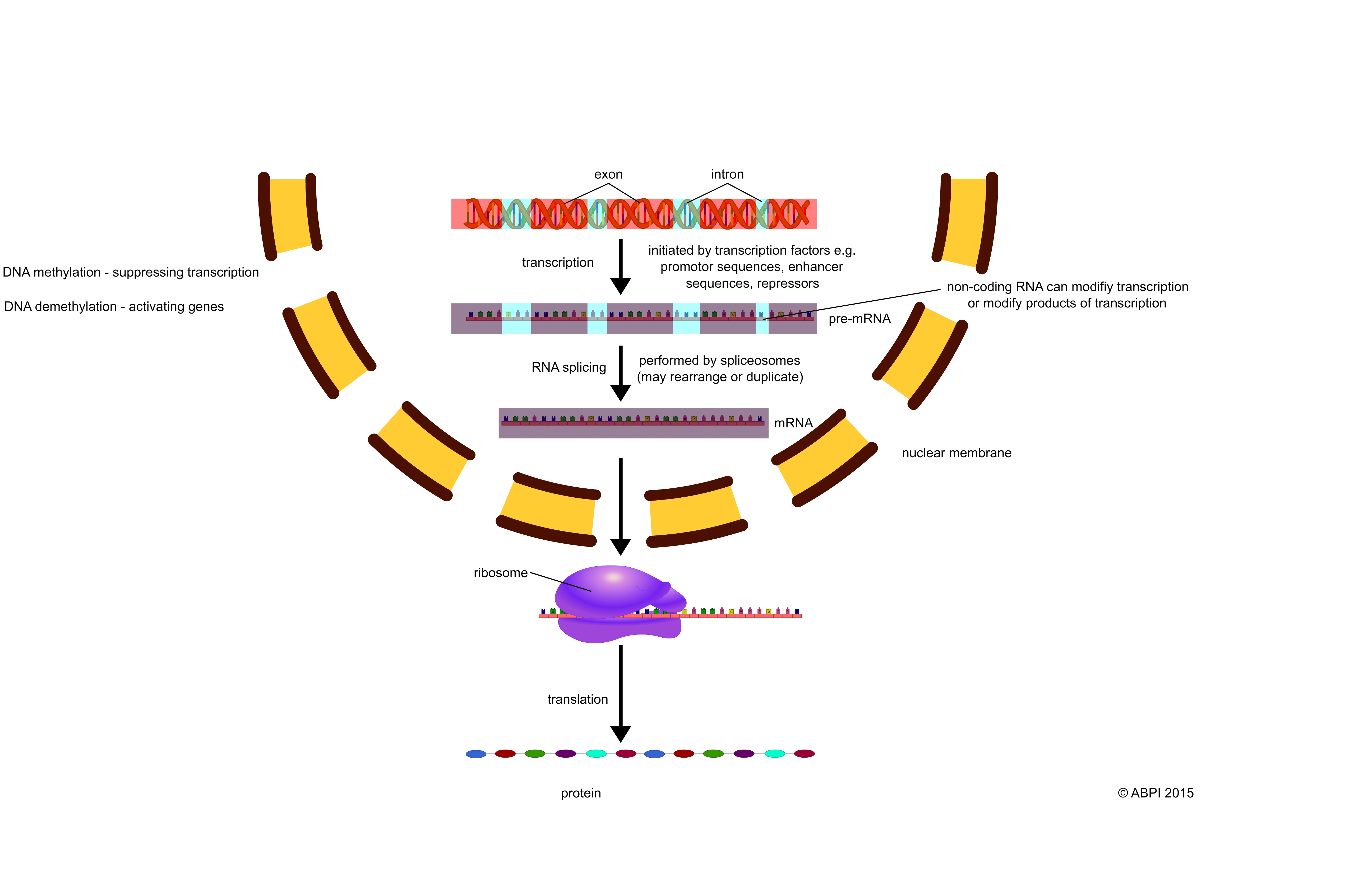This topic takes on average 55 minutes to read.
There are a number of interactive features in this resource:
 Biology
Biology
Protein synthesis is the process by which the information in the DNA code is translated into proteins. Some of these proteins form part of the cell structure. Others are enzymes that then control the production of all the other materials that make up the cell or the entire organism.
Protein synthesis is a continuous process but we break it down into stages to help us understand what is taking place and where it happens in the cell.

Animation showing protein synthesis from transcription in nucleus to packaging and exocytosis from the Golgi apparatus:
For many years, scientists thought each gene coded for a single protein. Now we know that a variety of different factors act on the DNA itself or on the mRNA that is formed in the nucleus. As a result, a single gene may code for many different proteins depending on both the internal and external environment of the cell.

1. Transcription factors
The transcription of the DNA itself may be affected by transcription factors in a number of different ways
2. Spliceosomes
The initial mRNA is a transcription of all of the DNA including introns or non-coding regions of DNA. It needs to be modified before it is transported to the ribosomes for translation. The introns are removed by enzymes called spliceosomes. Sometimes spliceosomes join some of the exons, or coding regions, in different sequences so the same region of DNA can result in several different types of mRNA.
Epigenetics is a relatively new way of looking at the effect of the environment on the genome. It describes how different chemicals associated with the DNA or RNA can affect the way the genetic code is read. This external control of the genome may be brought about by:
Some proteins are produced in an inactive form. Post-translational changes as a result of second messengers such as cyclic AMP (cAMP) in the cell, or specific enzymes in the body, will modify and activate the proteins, changing the molecule produced. Examples are the production of fibrin from fibrinogen in the clotting cascade and the production of pepsin from pepsinogen in the digestive system.
Investigate epigenetics and produce a poster explaining one example of this fast-growing area of research to your peers.
